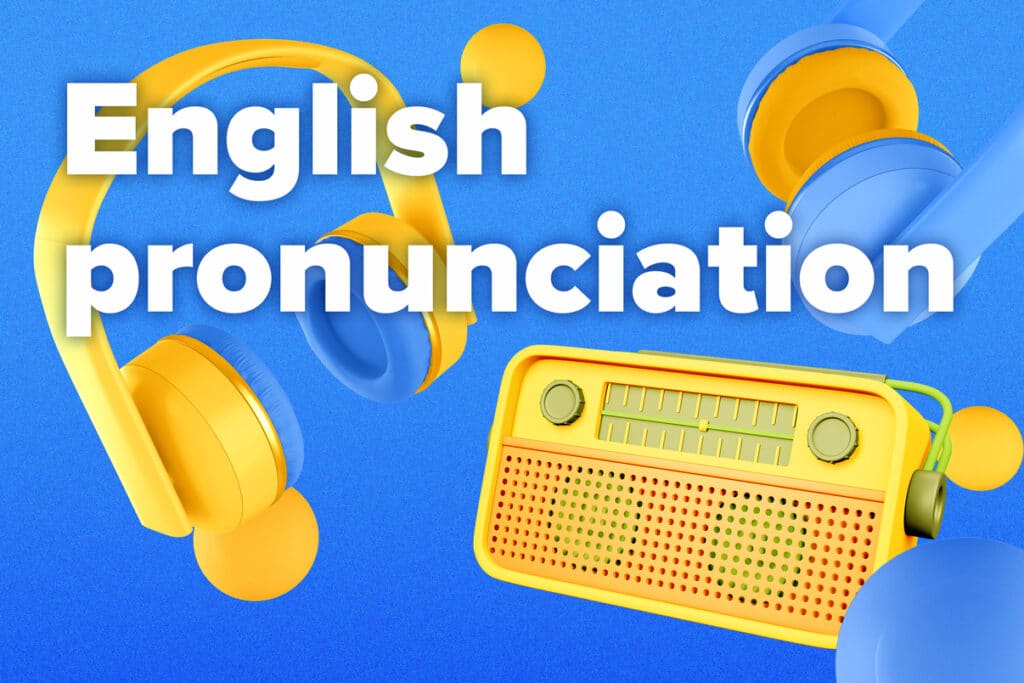Contents
- Rule #1: Short words have short vowels
- Rule #2: Two vowels side-by-side make a long vowel
- Rule #3: Keep vowels short before double consonants
- Rule #4: Pronounce double consonants as a single letter
- Rule #5: Pronounce double consonant TT as D
- Rule #6: If E is at the end of a word, it’s silent
- Rule #7: Pronounce C like S when it’s followed by I, E, or Y
- Rule #8: Unstressed vowels make a “schwa” sound
- Rule #9: Pronounce the word ending TION with a SH sound
- Rule #10: G and K are always silent before N at the beginning of a word
- Rule #11: Pronounce S like Z at the end of a word
- Rule #12: Pronounce S like Z between two vowels
- Rule #13: Pronounce X like GZ before a stressed syllable
- Rule #14: Pronounce X like Z at the beginning of a word
- Rule #15: Y is both a consonant and a vowel
- Rule #16: NG sometimes sounds like two letters stuck together
- Rule #17: Past tense endings aren’t always pronounced as D
- Rule #18: Sometimes H is silent
- Rule #19: Pronounce OO as a short U when it’s followed by K
- Rule #20: Pronounce EI as a long E if it comes after C in a stressed syllable
- Rule #21: Pronounce S, Z and G like a French speaker in specific words
- Rule #22: OU has many pronunciations
- Rule #23: Stress on the first syllable makes the word a noun
- Rule #24: L becomes dark near the end of a syllable
- Rule #25: TH can be voiced or unvoiced
- And One More Thing...
The 25 Most Important English Pronunciation Rules to Improve Your Speaking

What do the words “gnash” , “squirrel” and “thorough” have in common?
They’re some of the hardest words to pronounce in English for both native speakers and learners alike. English is infamous for its difficult pronunciation rules. Some rules are intuitive and are pronounced how you would expect them to be, but others need to be memorized and practiced.
Here are 25 English pronunciation rules to help you master tricky English words.
Download: This blog post is available as a convenient and portable PDF that you can take anywhere. Click here to get a copy. (Download)
These rules focus on General American English pronunciation. They may be different for other English dialects such as British English, Australian English or South African English speakers.
Rule #1: Short words have short vowels
Vowel sounds are commonly divided into short and long vowel sounds. While they may seem complicated, there are some rules for knowing when a vowel sound is short or long.
Short vowels always occur in short words. These are often one syllable and typically have three or four letters, for example:
Rule #2: Two vowels side-by-side make a long vowel
Two vowels beside each other are not uncommon in English, but they can be easily mastered with this simple trick.
Namely, when there are two different vowels beside each other, they generally make the long sound of the first vowel. For example:
long e sound: meat
long a sound: plain
long o sound: goat
Need some additional help with this pronunciation rule or any of the others in this list? It’s a good idea to hear a native English speaker when learning how to pronounce correctly. You can do this by paying close attention to any English movies or shows that you watch, or by using a program like FluentU.
FluentU takes authentic videos—like music videos, movie trailers, news and inspiring talks—and turns them into personalized language learning lessons.
You can try FluentU for free for 2 weeks. Check out the website or download the iOS app or Android app.
P.S. Click here to take advantage of our current sale! (Expires at the end of this month.)

Rule #3: Keep vowels short before double consonants
Double consonants don’t only have rules for how they’re pronounced, but also play a role in how to pronounce the vowel that comes before them.
The rule is simple: the vowel that comes before double consonants is always in its short pronunciation. For example:
diner
has only one n, and the i is pronounced as a long vowel
dinner
has double n, so the i is pronounced as a short vowel
Rule #4: Pronounce double consonants as a single letter
Unlike some languages, double letters in English aren’t pronounced any different than single letters.
This is true for words that have double ll, ss, ff, rr, pp, zz, dd and cc. They’re all pronounced as if they’re singular, like in these words:
Rule #5: Pronounce double consonant TT as D
In General American English, there’s one double consonant that is not pronounced like its singular counterpart. In fact, the double consonant tt gets reduced to what sounds like a d sound. For example:
Rule #6: If E is at the end of a word, it’s silent
Sometimes English words can be confusing if they end with an e. Many learners will want to include the e in their pronunciation, but it’s actually silent.
Rather, the e causes the vowel before it to become long:
Rule #7: Pronounce C like S when it’s followed by I, E, or Y
C makes more of an s sound when it’s followed by i, e, or y. For example:
Rule #8: Unstressed vowels make a “schwa” sound
While a “schwa” may seem like a fancy English sound, it’s actually not. In fact, it’s the sound that’s easiest for our mouths to create: holding the jaw slightly open, relaxing the tongue and making a short sound. It’s very similar to the short u sound in English.
The cool thing about the “schwa” is that it can happen to virtually any vowel. When a vowel is unstressed in a word, it reduces to this sound. This can be seen in the following words:
panda
mitten
bikini
citrus
freedom
Rule #9: Pronounce the word ending TION with a SH sound
The word ending tion is tricky to pronounce for two reasons.
The first reason is that the t is not pronounced like a t at all. Instead, it’s pronounced like a sh as in the word “shoe.” Next, the vowels in the ending are reduced to a schwa. As a whole, tion ends up being pronounced more like “shun.”
This gives us words that include the sh sound followed by a reduced schwa vowel:
Rule #10: G and K are always silent before N at the beginning of a word
Many languages have rules that every consonant must be pronounced, but English has many rules that make consonants silent in certain cases.
One of these rules is that when a word begins with a k or a g and then is immediately followed by an n, the k or g is not pronounced. Instead, it’s almost as if the word started with a n. For example:
Rule #11: Pronounce S like Z at the end of a word
There are many situations where the letter s is pronounced like a z sound.
This happens when a word that ends in a b, d, g, l, m, n, ng, r, th or v becomes plural or an s is added. For example:
The es ending of plural words is also pronounced like a z like in “buses.”
Rule #12: Pronounce S like Z between two vowels
When s is between two vowel sounds, it’s pronounced like a z. For example:
There are some exceptions to this rule, such as in the words “goose” and “chase.”
Rule #13: Pronounce X like GZ before a stressed syllable
By now, we know that x makes a ks sound as in “taxi” or “toxic.” But this sound is only in unstressed syllables.
When x comes before a stressed syllable, it can make a gz sound. For example:
Rule #14: Pronounce X like Z at the beginning of a word
There is yet another way that x can be pronounced.
Rarely, it can make a z sound. This pronunciation happens almost exclusively at the beginning of words (unless you’re saying the word “x-ray” ). For example:
Rule #15: Y is both a consonant and a vowel
Y is a unique letter in English: it acts like both a consonant and a vowel.
When y is at the beginning of a word or syllable, it’s considered a consonant. In these cases, it’s pronounced with the long ee sound like in these words:
When y is at the end of a word or syllable, it’s a vowel and can be pronounced in a few different ways.
Y sounds like a long e sound at the end of some words. This pronunciation happens mostly in adverbs (words ending in ly that describe verbs) or words that end in ity:
quickly
slowly
community
ability
Y sounds like ai in one-syllable words such as:
It sounds like a short i sound in words where it’s in the middle of a syllable:
When combined with a, the ay combination is pronounced like a long a sound:
Rule #16: NG sometimes sounds like two letters stuck together
When learning English, we learn that the ng combination makes a special sound as in the words “king” and “thing.”
There is, however, a second pronunciation of ng. In fact, there are certain words where the ng is not pronounced as a singular sound, but rather pronounced in such a way that you hear both letters: n and g. For example:
Rule #17: Past tense endings aren’t always pronounced as D
The regular past tense in English is formed by adding ed to the end of verbs. This ending, however, can be pronounced multiple ways.
The first way is as a general d sound. This happens for verbs that end in voiced consonants (consonants that use the vocal cords) like n, m, g, l, z, b, r and v:
The second pronunciation of the ed ending is as a t. This happens for verbs that end in voiceless consonants (consonants that don’t use the vocal cords) like k, f, s and p:
The third pronunciation of this ending is pronounced like id with a short i sound. This pronunciation is for verbs that already end in a t or a d as in the following:
Rule #18: Sometimes H is silent
Most of the time when an h is at the beginning of a word, we pronounce it by almost letting out a little sigh such as in the words “hot” and “humble.”
There are a few words in which you don’t let this little bit of air out and rather pronounce the word as if there is no h at all such as the following:
Rule #19: Pronounce OO as a short U when it’s followed by K
Usually, the oo combination is pronounced with a long u sound such as in “school” or “doom,” but sometimes it has a short u sound. This occurs when it’s followed by a k:
Rule #20: Pronounce EI as a long E if it comes after C in a stressed syllable
Usually, ei is pronounced as the long a sound such as in “neighbor” or “weight.” The exception to this is when ei follows a c in a stressed syllable like with these words:
Rule #21: Pronounce S, Z and G like a French speaker in specific words
Believe it or not, the French language had a big impact on the way English words are written and pronounced. One of the most evident French sounds in English is in some words with s, z, or g:
seizure
regime
, garage
(the g makes a French j sound)
vision
, measure
(pronounced like the French j as in je
)
This sound is pretty rare and only occurs in specific words. I recommend memorizing these words as there’s no rule for when the sound should be made.
Rule #22: OU has many pronunciations
You would expect ou to be pronounced almost like “ow” in most cases such as with words like “about” and “shout.” There are also quite a few instances when this doesn’t apply and the ou combination is pronounced differently.
If the combination is oup, a long o sound is formed:
With ould, a schwa sound is created and it sounds more like ood with not much of an l sound:
If the combination is ough, there is a variety of pronunciations, depending on the word. It can sound like there’s an f at the end such as these words:
It could also just sound like a long o such as “through.” Lastly, if the combination is ought, it can sound like “ot” such as the world “thought.”
These ones can be a bit difficult and memorization is the best way to remember which words make which sounds with the ou combination.
Rule #23: Stress on the first syllable makes the word a noun
Word stress doesn’t only affect the pronunciation of some letters, but it also changes the meaning of some words. As a matter of fact, changing the stress on some words changes them from nouns to verbs.
When word stress is on the first syllable of some words, that word is in its noun form. When stress is on the last syllable, that word is in its verb form.
This can be seen in the following words:
produce (noun form) and “produce” (verb form)
As in, “The farm produces a lot of produce.”
increase (noun form) and increase (verb form)
As in, “We have to increase our sales to see an increase in profit.”
Rule #24: L becomes dark near the end of a syllable
The letter l has two pronunciations referred to as the “clear l” and the “dark l.”
“Clear l” is the common pronunciation of the letter that we are used to as in the words “leave,” “loose” and “pluck.” The “dark l” is pronounced by raising the back of the tongue during pronunciation.
This often occurs when l is at the end of a syllable as in these words:
This rule also applies to words that end in le:
In these words, it almost sounds like there is a “schwa” preceding the “dark l” sound.
Rule #25: TH can be voiced or unvoiced
Even though th is taught as a sound that is somewhat unique to English, its complication doesn’t stop there. In fact, the “th” in English is pronounced as two distinct sounds.
The first “th” sound is voiced (vocal cords vibrate) as in the following words:
The second “th” is voiceless (vocal cords don’t vibrate) as in these words:
Unfortunately, there’s no rule for when to use which sound. That means that you’ll have to memorize which words have which sound.
Don’t fear weird English pronunciation! By learning these simple rules, you can master English speaking and communicate clearly with whoever you meet!
And One More Thing...
If you like learning English through movies and online media, you should also check out FluentU. FluentU lets you learn English from popular talk shows, catchy music videos and funny commercials, as you can see here:
The FluentU app and website makes it really easy to watch English videos. There are captions that are interactive. That means you can tap on any word to see an image, definition, and useful examples.
For example, when you tap on the word "searching," you see this:
Learn all the vocabulary in any video with quizzes. Swipe left or right to see more examples for the word you’re learning.

FluentU helps you learn fast with useful questions and multiple examples. Learn more.
The best part? FluentU remembers the vocabulary that you’re learning. It gives you extra practice with difficult words—and reminds you when it’s time to review what you’ve learned. You have a truly personalized experience.
Start using the FluentU website on your computer or tablet or, better yet, download the FluentU app from the iTunes or Google Play store. Click here to take advantage of our current sale! (Expires at the end of this month.)










